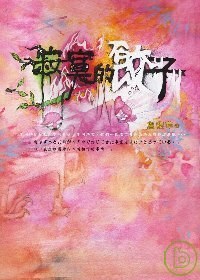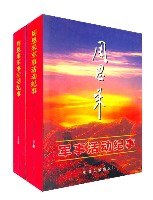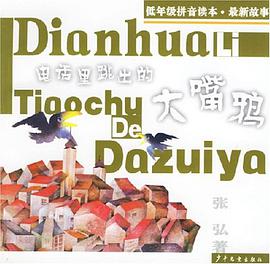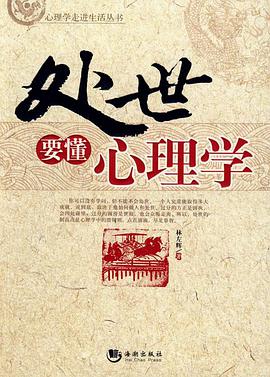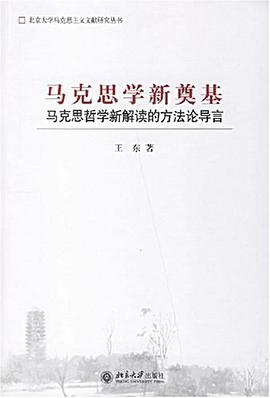

http://www.accessmylibrary.com/coms2/summary_0286-6434129_ITM
COPYRIGHT 2000 Asian Folklore Studies
OPPITZ, MICHAEL and ELLISABETH HSU, Editors. Naxi and Moso Ethnography: Kin, Rites, Pictographs. Zurich: Volkerkundemuseum Zurich, 1998. 396 pages. Maps, b/w photographs, pictographs (by Mu Chen), bibliography, index, names of ceremonies, ritual chants and dances. Hardcover SFr 85.--; ISBN 3-909105-35-1.
The Naxi of northwest Yunnan are known for their ritual specialists or priests named dto-mba who have practiced their rites using texts written in pictographs. The Moso, considered to be a branch of the Naxi, live to the northeast of the Naxi. Their society is characterized by matrilineal kinship and a duolocal marriage custom (Besuchsehe).
The Naxi pictographic script was introduced to the West in the late nineteenth century by European missionaries. During the first half of the twentieth century, many of the manuscripts were translated both by Joseph F. Rock and Li Lin-ts'an, two scholars who also edited several dictionaries of the pictographs. After the Liberation of 1949, religious performances of the dto-mba were prohibited and Rock was expelled from China. Nevertheless, due to the amount of research they had done, the study of the pictographs and the manuscripts continued. Of particular importance is Anthony Jackson's Na-khi Religion (1979), in which persuasive hypotheses are presented from the perspective of social anthropology on the relationship between Naxi and Moso, and on the formation of the pictographic scripts.
Some data concerning the kinship system of the Moso were collected in the 1950s as part of a social historical survey of minorities in China. Many of these data were treated as internal documents and were, therefore, rarely accessible for researchers not employed by the government. A more open policy towards academic research during the 1980s allowed Zhang Chengxu et al (1980), Yan Ruxian and Song Zhaolin (1983), and others to publish detailed studies on the Moso family system. In these studies, the authors remain loyal to Marxist anthropology and base many of their explanations on the theory of social stages.
When in the latter half of the 1980s it again became possible for foreign researchers to do fieldwork, the study of the Naxi and Moso was reactivated. New books on Naxi culture appeared, and the first conference on Naxi culture was held in Lijiang in 1987. Several researchers who had received their training in social anthropology in the West did fieldwork and wrote dissertations on the culture and customs of the Naxi and Moso. However, for a long time after the publication of Jackson's Na-khi Religion, no systematic study in English on these populations appeared. A publication like Naxi and Moso Ethnography is, therefore, timely and long awaited. The papers of this volume are carefully selected studies covering the period from the mid-1980s to the present, and are organized into three parts: Kin, rites, and pictographs.
In the first part, "Kin," the reviewer is particularly interested in the contributions by Charles McKhann and Elisabeth Hsu. They both focus on the clear difference in kinship patterns between the Lijiang Naxi and Moso commoners, two groups closely related in their language and possessing similar origin myths. The Lijiang Naxi prefer cross-cousin marriage between exogamous patrilineages while among the Moso "men and women alike typically reside and work in their natal households throughout their adult lives" adhering to a unique form of institutionalized sexual union rather than a marriage form, "so that the members of individual households are linked by matrilineal kinship ties" (32).
McKhann, in his contribution "Naxi, Rerkua, Moso, Meng: Kinship, Politics and Ritual on the Yunnan-Sichuan Frontier," describes the historical background, the kinship systems, marriage customs, and religious rites of four villages where he did research. He introduces atypical examples of kinship, such as that of the Naxi living far north of Lijiang who practice a form of "arranged fraternal polyandrous and sororal polygynous marriages" that is often found in Tibetan societies (38). From the observation of a variety of kinship systems and marriage customs in the Naxi-Moso area, he concludes that "a substantial degree of bilateral kinship reckoning underlies all of the systems and that exclusive matrilineal or patrilineal reckoning represents particular historical transformations" (41). McKhann further suspects that "matrilineal practices among commoner basin Moso households are a product of attempts by Moso elites to solidify their hegemonic position in society" (34). The reviewer is impressed by how matrilin eality of Moso commoners provides a convenient system to support the Moso ruling classes. There arises, however, the question as to why matrilineality as practiced by the Moso is rare in the world even though societies structured upon a relation of ruling and ruled classes are rather common.
In her contribution "Moso and Naxi: the House," Elisabeth Hsu draws attention to a common basic principle underlying the otherwise contrary kinship systems of the Naxi and Moso commoners. She finds that an understanding of the "house" as a basic organization in the sense proposed by Levi-Strauss is useful for the study of Moso and Naxi kinship. Referring to Shih Chuan-kang's work, she says that in the case of the Moso the domestic group called yidu "would be characteristic of Levi-Strauss' 'house"' and that its members may often include those who are not consanguineously related (76). Yet, the members' everyday lives are centered on the maintenance of the yidu. They "cherish female offspring and keep them in the 'house' rather than marrying them off" (78). This latter fact may be related to a "hearth-oriented ideology" that she distinguishes from an "alliance-oriented" one: "Among the Moso, the 'hearth-oriented' ideology, with a rhetoric of 'harmony in the house' prevails in daily affairs, and the 'alliance- oriented' one, with a rhetoric of 'bone,' in grand rituals" (85).
Data on Naxi kinship are not as abundant as those of the Moso. Hsu, therefore, relies on descriptions in pictographic manuscripts, a report by Goullart of Naxi society in the 1950s, and her own fieldwork. She finds that Naxi women are protected by their consanguineous relatives in patrilineal cross-cousin marriage, and that an ideology of "harmony in the house" is steadily at work and related to a "hearth-oriented ideology." This is the reason why Naxi women are "powerful and respected." Hsu concludes that "[t]he two indigenous concepts of social relations crucial for Moso and Naxi kinship are 'house' and 'bone"' (90).
The contributions by McKhann and Hsu remind the reviewer of the fact that the Akha of northern Thailand, who belong to the Yi branch of the same Tibeto-Burman language group as the Naxi and Moso, divide the space in a traditional house equally into a male and a female section and that each section has its own hearth and altar. This kind of structure found in the traditional house suggests that their basic concept of kinship is bilateral, although many reports tell us that the Akha attach great importance to the continuity of their patrilineage.
Part Two of the volume focuses on rites. It includes a photographic essay by Zhang Xu called "A Naxi Cremation Ceremony" that shows a real cremation and offers a brief commentary on it. Another essay entitled "The Dto-mba Ceremony to Propitiate the Demons of Suicide" by He Limin and He Shicheng reports on a ceremony reenacted in 1995 in cooperation with elderly dto-mbas. Rock speaks of this ceremony as being the most magnificent of all ceremonies practiced by dto-mbas in the first half of the twentieth century. It is therefore most significant that the whole process of the ceremony has been recorded.
Two other essays in Part Two I think are particularly impressive: Chuan-kang Shih's "Mortuary Rituals and Symbols among the Moso," and Christine Mathieu's "The Moso Ddaba Religious Specialists." Shih interprets the performance of mortuary rituals among the Moso as being "as much a kinship behaviour as a religious behaviour" (103). He concludes his essay by saying that "[f]rom handling the corpse to deciding the scope and procedures of the funeral, from financing the whole event to the dramatic ritual performances, from the symbolic meanings associated with the temporary interment to those associated with cremation, every aspect is aimed at reinforcing matrilineal harmony" (123). Although he refers to the role of Lamas in Tibetan Buddhism and of ddabas, indigenous ritual specialists, he asserts that the matrilineal kin's participation is more important in the funeral, which the Moso believe to be the most solemn and serious celebration. One of the reasons why the reviewer earlier expressed doubt on McKhann's suggestion that "matrilineal practices among commoner basin Moso households are a product of attempts by Moso elites to solidify their hegemonic position in society" (34) is that the matrilineal kin have great concern for mortuary rituals.
Christine Mathieu in her essay describes in detail a ddaba who lives in the border area between the Naxi and the Moso. His village adheres to a patrilineal kinship system and observes a virilocal and neolocal residence pattern. Therefore, this ddaba cannot be said to be typical among the Moso. Although this example may be atypical, Mathieu introduces good material that allows us to imagine the rituals and the religious environment of this area. She describes the fundamental features of the ddaba tradition, its organization, ceremonial styles, concepts of souls and the afterlife, and the ddaba's pantheon, comparing it with that of other religious specialists such as Lamas and shamans.
In the third part, "Pictographs," the article by Anthony Jackson and Pan Anshi, "The Authors of Naxi Ritual Books, Index Books and Books of Divination," will, I believe, raise the level of the study of Naxi pictographic texts. Jackson and Anshi's systematic investigation into thousands of manuscripts makes three important contributions: (1) it identifies five different writing styles in the title pages of the manuscripts; (2) it shows how the writing styles, the different dto-mba schools, and individual dto-mba all interrelate, and thus convincingly shows an idea proposed earlier by Jackson in his Na-khi Religion--namely, that Naxi dto-mba religion became established in much more recent times than had been generally assumed; and (3) it analyzes the index books of dto-mba ceremonies in such a way as to make the whole arrangement of old Naxi religious practices clearer.
In another article entitled "Ritual Drums of the Naxi in the Light of their Origin Stories," Michael Oppitz argues that drums are the most important religious instrument in societies with oral tradition and shamanic beliefs. As dto-mba priests used drums in their rituals, Oppitz decides to examine the vehicle in the Naxi creation story that the hero Ts'o-za-llu-ghugh rides to escape from the flood in order to determine whether it is a belly-float, a skin-boat, or a drum. He concludes that modern philologists cannot determine whether the myth makers intended the vehicle to be a drum, belly-float or boat. He analyzes oral traditions found in the Himalayas and in northern Asia concerning the drum, and then he suggests that in the case of the Naxi, the drum might have been changed to a belly-float or a boat in the process of writing down the rituals.
Although the traditional cultures of the Naxi and Moso have recently been threatened by the large number of tourists visiting the beautiful Naxi city of Lijiang, the papers collected in this volume indicate that progress in the study of Naxi and Moso culture is still possible.
COPYRIGHT 2000 Asian Folklore Studies
具體描述
讀後感
評分
評分
評分
評分
用戶評價
國際化視野,基本展現瞭世界範圍內納西學研究的大緻領域。
评分國際化視野,基本展現瞭世界範圍內納西學研究的大緻領域。
评分國際化視野,基本展現瞭世界範圍內納西學研究的大緻領域。
评分國際化視野,基本展現瞭世界範圍內納西學研究的大緻領域。
评分國際化視野,基本展現瞭世界範圍內納西學研究的大緻領域。
相關圖書
本站所有內容均為互聯網搜索引擎提供的公開搜索信息,本站不存儲任何數據與內容,任何內容與數據均與本站無關,如有需要請聯繫相關搜索引擎包括但不限於百度,google,bing,sogou 等
© 2025 qciss.net All Rights Reserved. 小哈圖書下載中心 版权所有



